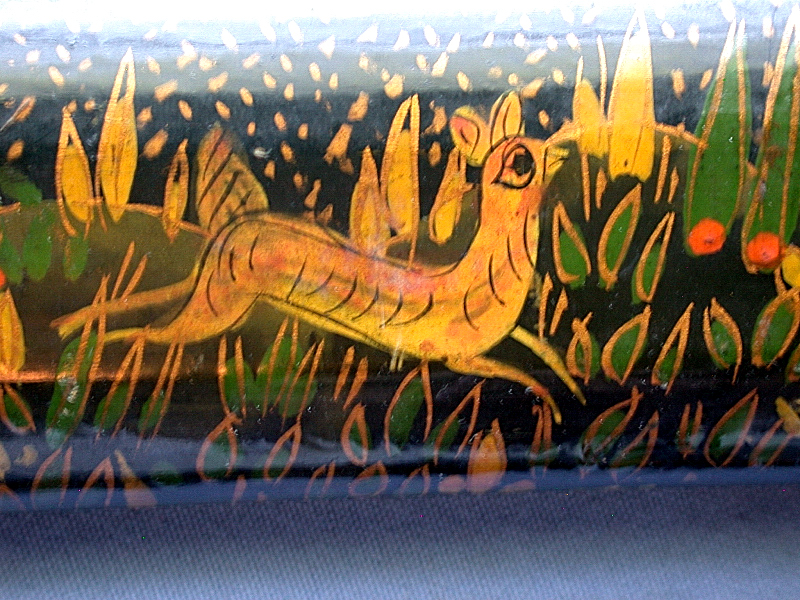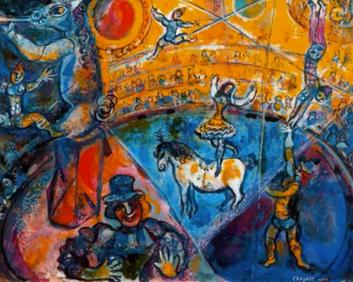One of the craziest things I've ever done was try to take six Coursera classes at the same time. I signed up this past spring in a fit of exuberance — university level courses available online, free! — and ignorance — online and free means denatured, I thought.
The classes were a challenge. They hammered my available time, will and experience. The MOOC environment put more of the work of succeeding directly on me. At the same time my work hours almost doubled. The result? After a month I whittled participation down to four classes. A couple of weeks later, I washed right off the deck. It was an eye-opening initiation.
I had also signed up for a couple of autumn classes. These are starting this week, and I'm going to try to hang on. They're Modern & Contemporary American Poetry, offered by U. Penn and taught by Kelly Professor of English and Faculty Director of Kelly Writers House, Al Filreis; and Accountable Talk®: Conversation that Works, offered by U. Pittsburg's Jennifer Zoltners Sherer, Pam Goldman and Lauren B. Resnick.
Here are my worries: First, one class requires 5 to 9 hours a week, and the other 3 to 5, for a total of 8 to 14. From the previous experience, I'd say twice the time is needed. That will be 16 to 28 hours weekly. Second, my work hours are supposed to go back to an average 45 a week, but haven't yet. Third, in the last few weeks of the classes when the work is toughest, NaNoWriMo starts up, and I'm attempting it (for the fourth time).
But the biggest and scariest worry for juggling all this is the northern hemisphere's autumn and early-winter seasons, with their ever-shortening days. I'm paying close attention to this, because in past years I didn't and it hit me hard.
To repair my work-fatigued mind, I've been using Lumosity. At the best of times, I mix up east-west directionalities (or, as I view it in the Northeast United States, left-right orientations), and I can manipulate shapes or colors but not both at the same time. When I'm tired, both faults get worse, and I also have an emotional disconnection from numbers so profound that they lose their hard values and turn expressive and amorphous — rather like metaphors — for me. Lumosity has a few games that fight these problems and help keep my mind in trim. The games have also uncovered other fatigue-related things, like unsynchronized anticipation of patterns, which are interesting — I was not aware of these.
To quiet my mind and increase stamina, I chant Om Gam Ganapataye Namaha, and meditate, I've been reading more, and listening to music and movies less, and when I work or read, I assume partial yoga poses sometimes.
The repair of the partially-slid hill and damaged buildings just to the east of where I live is done, and the neighborhood is somber — disaster can happen in a moment, even in old NYC nabes! — and quiet. That's a big improvement over the construction noise of the past few months.
With particular awareness, I'm tapping into my known Scandinavian heritage, and a guessed-at, older, mountainous and partly nomadic one, to learn better ways to deal with this season. We don't have Polar Nights in the Northeast United States. But there is a pervading sense of mourning and loss, as darkness increases and cold advances from the north.
Most autumn and winter holidays emphasize the importance of light. Their traditions of warm colors, and associations with fire, candles, twinkling lights and such, as well as of physical warmth and bountiful foods, are antidotes to darkness, and the dangers of cold weather. But participating in the holidays takes time, and what if you don't have enough and you need to wing it, like I will? Can I make enough warm feelings happen?
I read something last year on the importance of lighting for Scandinavians, as they get their homes ready for short days. Unfortunately I didn't bookmark the article. But this year I found something called How to Survive the Dark Winters at MyLittleNorway.com, a site run by two bloggers, L-Jay and Moose, who love to share about Norway. L-Jay wrote How to Survive... and she's provided lots of practical advice.
Feeling rather like a series of gentle slaps, L-Jay's wake-up points are ones we usually wouldn't think of — take cod liver oil to get enough vitamins A, D and E; recognize that SAD (Seasonal Affective Disorder, a darkness-triggered seasonal depression that can be lethal) exists and be proactive fighting it; stay active and upbeat; intentionally tap into the spirit of holidays; and do lots about using or finding light in unexpected ways. For example, L-Jay writes, "Window lamps are in every house. In the dark season Norwegians place hanging lamps in the windows to mimic the sun." Mimic the sun! Who knew!!
Last year I got some buffet lamps. With their long columns and narrow-diameter shades, they can be clustered together, or placed in tight spaces, to make soft pools of light at standing-eye-level. They made a big difference in my place. I'll be looking at window lamps, lantern-like candleholders, and such, for this year.
Writing a piece like this is a way of sharing with you all what's up with me. But, perhaps more, it's also a way of me putting myself on notice that trouble is coming and I need to do something about it. I feel as if my naked toes are curled over the lip of a precipice, and the valley and river I want to get to are far below. That I'm here because I want to be doesn't make it feel easier or less tense.
Wish me luck, if you care to. I won't be around social media much, because it takes too much time. But I will be around in spirit, and you will all be in my heart. Blessings to all.
The classes were a challenge. They hammered my available time, will and experience. The MOOC environment put more of the work of succeeding directly on me. At the same time my work hours almost doubled. The result? After a month I whittled participation down to four classes. A couple of weeks later, I washed right off the deck. It was an eye-opening initiation.
I had also signed up for a couple of autumn classes. These are starting this week, and I'm going to try to hang on. They're Modern & Contemporary American Poetry, offered by U. Penn and taught by Kelly Professor of English and Faculty Director of Kelly Writers House, Al Filreis; and Accountable Talk®: Conversation that Works, offered by U. Pittsburg's Jennifer Zoltners Sherer, Pam Goldman and Lauren B. Resnick.
Here are my worries: First, one class requires 5 to 9 hours a week, and the other 3 to 5, for a total of 8 to 14. From the previous experience, I'd say twice the time is needed. That will be 16 to 28 hours weekly. Second, my work hours are supposed to go back to an average 45 a week, but haven't yet. Third, in the last few weeks of the classes when the work is toughest, NaNoWriMo starts up, and I'm attempting it (for the fourth time).
But the biggest and scariest worry for juggling all this is the northern hemisphere's autumn and early-winter seasons, with their ever-shortening days. I'm paying close attention to this, because in past years I didn't and it hit me hard.
To repair my work-fatigued mind, I've been using Lumosity. At the best of times, I mix up east-west directionalities (or, as I view it in the Northeast United States, left-right orientations), and I can manipulate shapes or colors but not both at the same time. When I'm tired, both faults get worse, and I also have an emotional disconnection from numbers so profound that they lose their hard values and turn expressive and amorphous — rather like metaphors — for me. Lumosity has a few games that fight these problems and help keep my mind in trim. The games have also uncovered other fatigue-related things, like unsynchronized anticipation of patterns, which are interesting — I was not aware of these.
To quiet my mind and increase stamina, I chant Om Gam Ganapataye Namaha, and meditate, I've been reading more, and listening to music and movies less, and when I work or read, I assume partial yoga poses sometimes.
The repair of the partially-slid hill and damaged buildings just to the east of where I live is done, and the neighborhood is somber — disaster can happen in a moment, even in old NYC nabes! — and quiet. That's a big improvement over the construction noise of the past few months.
With particular awareness, I'm tapping into my known Scandinavian heritage, and a guessed-at, older, mountainous and partly nomadic one, to learn better ways to deal with this season. We don't have Polar Nights in the Northeast United States. But there is a pervading sense of mourning and loss, as darkness increases and cold advances from the north.
Most autumn and winter holidays emphasize the importance of light. Their traditions of warm colors, and associations with fire, candles, twinkling lights and such, as well as of physical warmth and bountiful foods, are antidotes to darkness, and the dangers of cold weather. But participating in the holidays takes time, and what if you don't have enough and you need to wing it, like I will? Can I make enough warm feelings happen?
I read something last year on the importance of lighting for Scandinavians, as they get their homes ready for short days. Unfortunately I didn't bookmark the article. But this year I found something called How to Survive the Dark Winters at MyLittleNorway.com, a site run by two bloggers, L-Jay and Moose, who love to share about Norway. L-Jay wrote How to Survive... and she's provided lots of practical advice.
Feeling rather like a series of gentle slaps, L-Jay's wake-up points are ones we usually wouldn't think of — take cod liver oil to get enough vitamins A, D and E; recognize that SAD (Seasonal Affective Disorder, a darkness-triggered seasonal depression that can be lethal) exists and be proactive fighting it; stay active and upbeat; intentionally tap into the spirit of holidays; and do lots about using or finding light in unexpected ways. For example, L-Jay writes, "Window lamps are in every house. In the dark season Norwegians place hanging lamps in the windows to mimic the sun." Mimic the sun! Who knew!!
Last year I got some buffet lamps. With their long columns and narrow-diameter shades, they can be clustered together, or placed in tight spaces, to make soft pools of light at standing-eye-level. They made a big difference in my place. I'll be looking at window lamps, lantern-like candleholders, and such, for this year.
Writing a piece like this is a way of sharing with you all what's up with me. But, perhaps more, it's also a way of me putting myself on notice that trouble is coming and I need to do something about it. I feel as if my naked toes are curled over the lip of a precipice, and the valley and river I want to get to are far below. That I'm here because I want to be doesn't make it feel easier or less tense.
Wish me luck, if you care to. I won't be around social media much, because it takes too much time. But I will be around in spirit, and you will all be in my heart. Blessings to all.









.cover.jpg)






